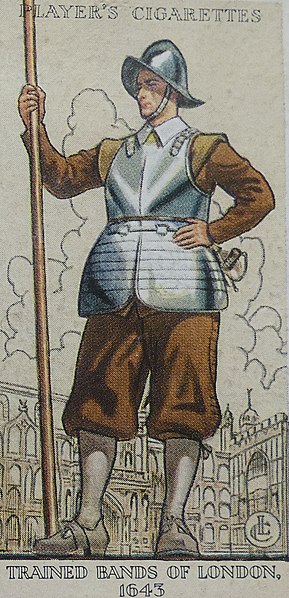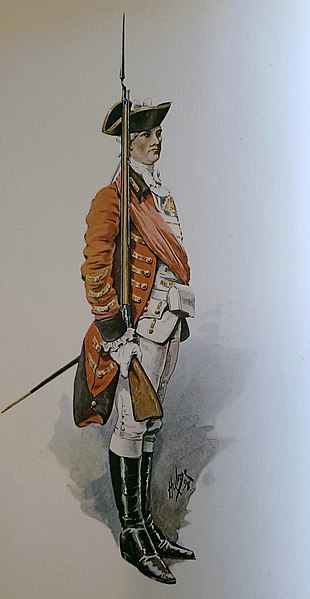The English Militia was the principal military reserve force of the Kingdom of England. Militia units were repeatedly raised in England from the Anglo-Saxon period onwards for internal security duties and to defend against external invasions. One of the first militia units in England were the fyrd, which were raised from freemen to defend the estate of their local Shire's lord or accompany the housecarls on offensive expeditions. During the Middle Ages, English militia units continued to be raised for service in various conflicts such as the Wars of Scottish Independence, the Hundred Years' War and the Wars of the Roses. Militia troops continued to see service in Tudor and Stuart periods, most prominently in the Wars of the Three Kingdoms. Following the Acts of Union 1707, the English Militia was transformed into the British Militia.
A muster of the Massachusetts Bay Colony militia in 1637. English militia of the period wore similar patterns of dress.
A modern recreation of a 7th-century Anglo-Saxon warrior
A member of the London Trained Bands in 1643
The British Militia was the principal military reserve force of the Kingdom of Great Britain. Militia units were repeatedly raised in Great Britain during the Georgian era for internal security duties and to defend against external invasions. The Militia Act 1757, passed by the Parliament of Great Britain after the outbreak of the Seven Years' War, led to the rapid expansion of the British Militia in order to defend from potential French invasions. In the Kingdom of Ireland, a client state of Great Britain, the equivalent force was the Irish Militia, which saw heavy service in the Irish Rebellion of 1798 alongside British militia units. The existence of militia units in Great Britain and Ireland played an important role in freeing regular troops from the British and Irish establishments for overseas service.
Members of the Norfolk Militia undergoing musket training in 1759
An officer of the Norfolk Militia in 1759
John Campbell, 4th Duke of Argyll






